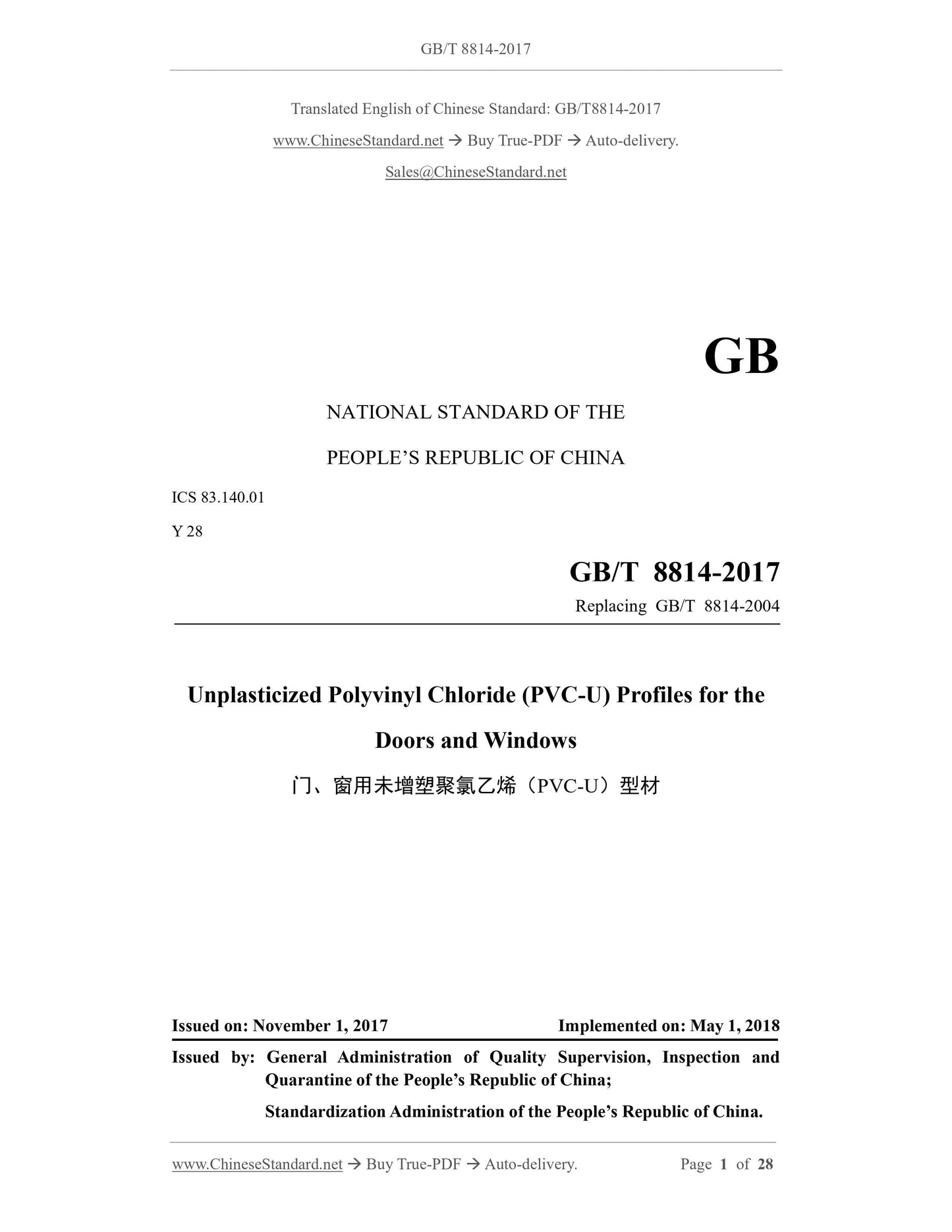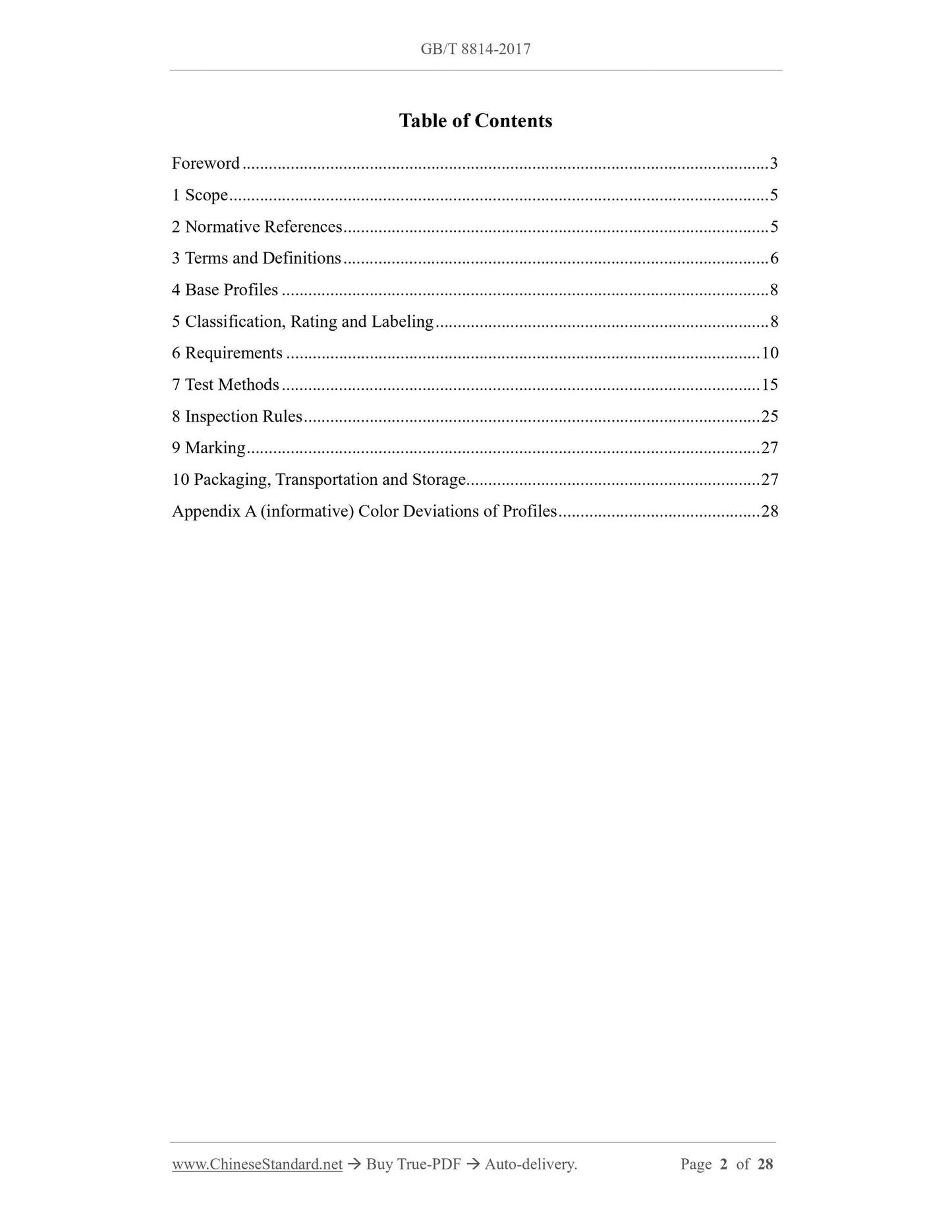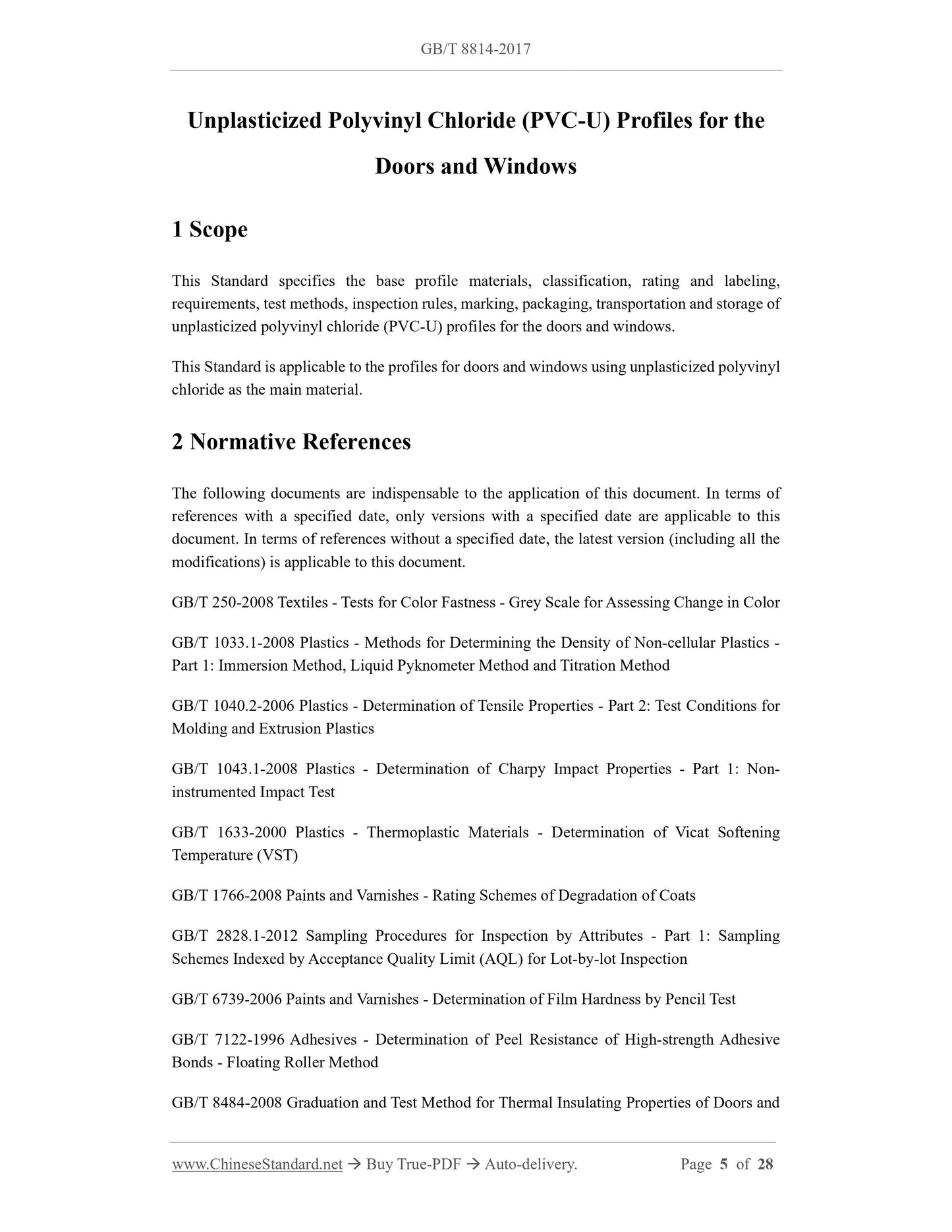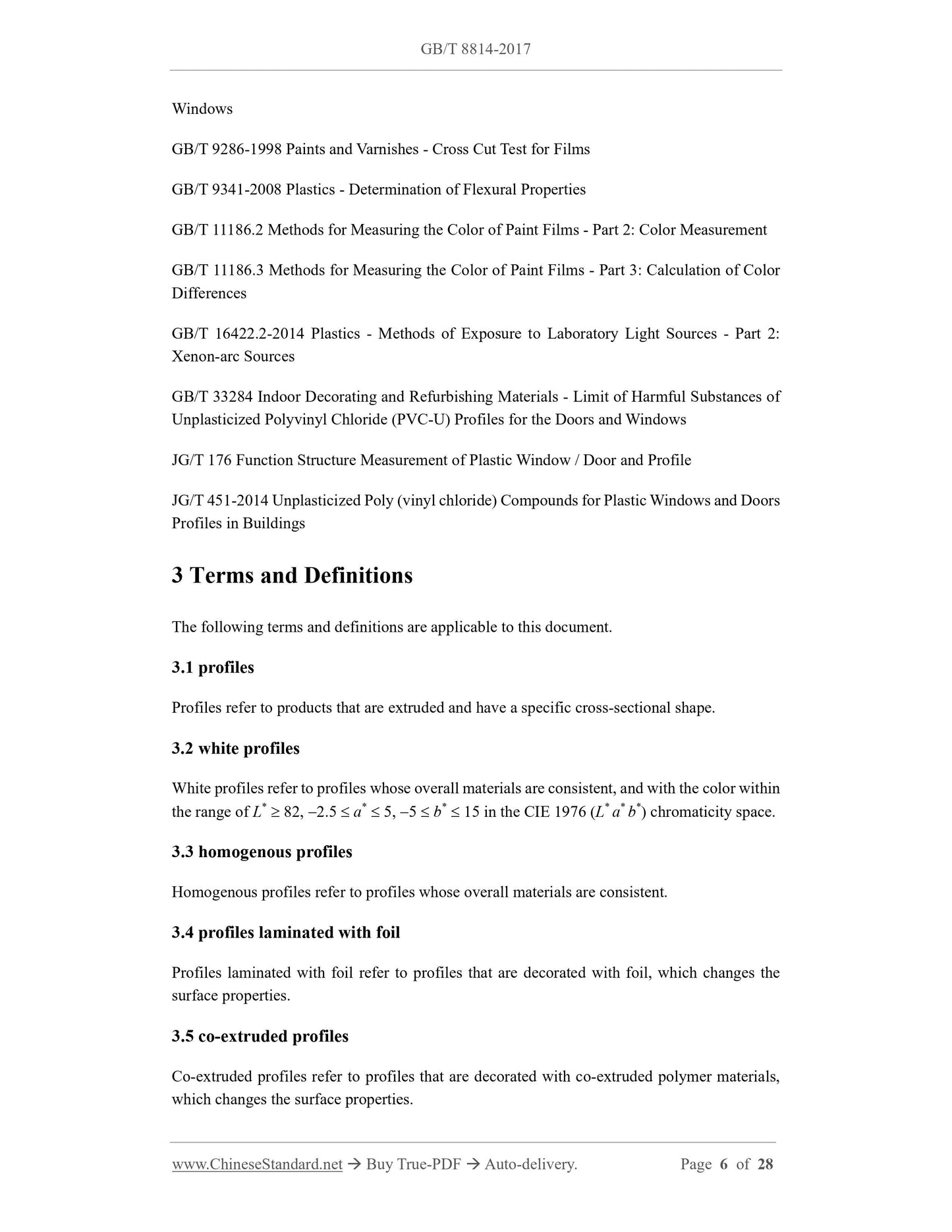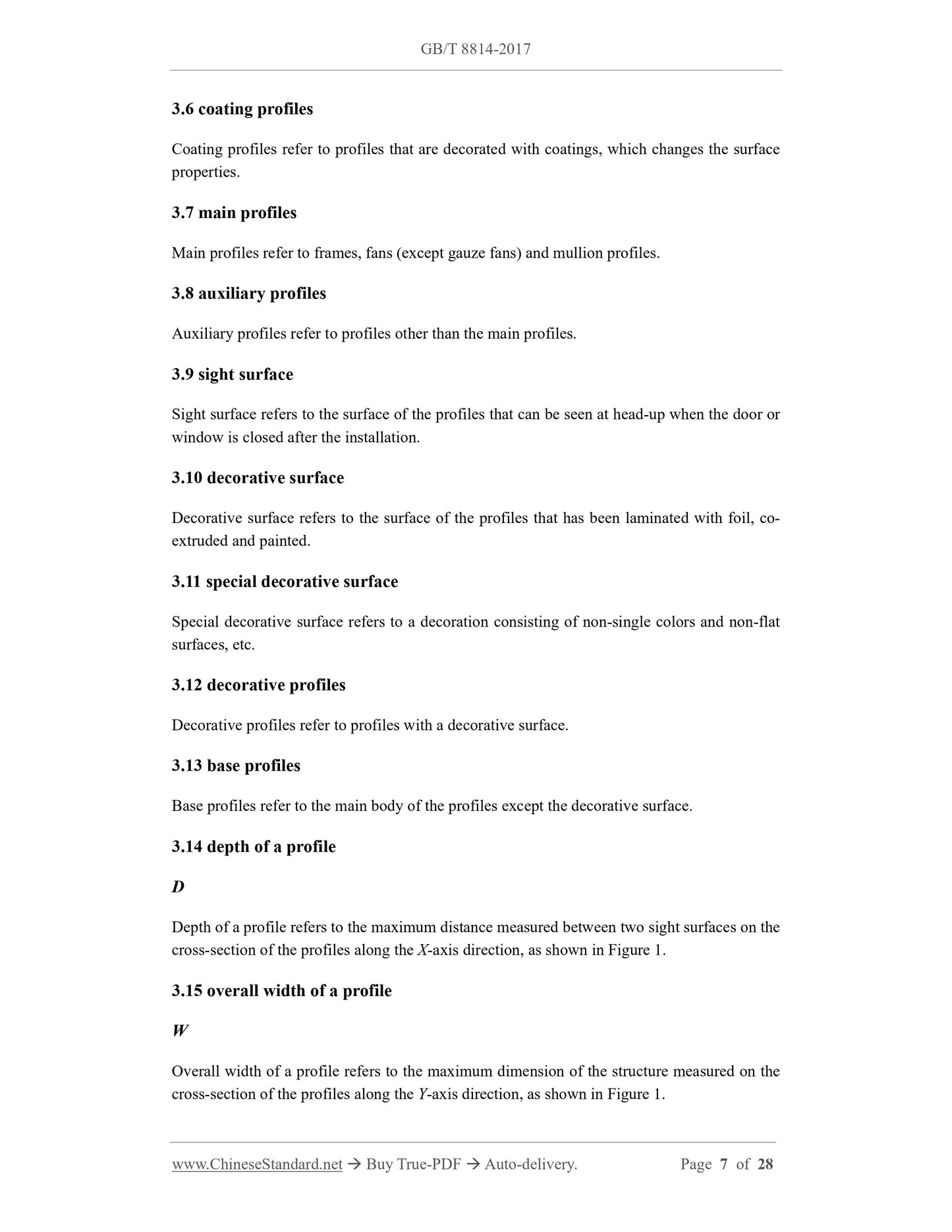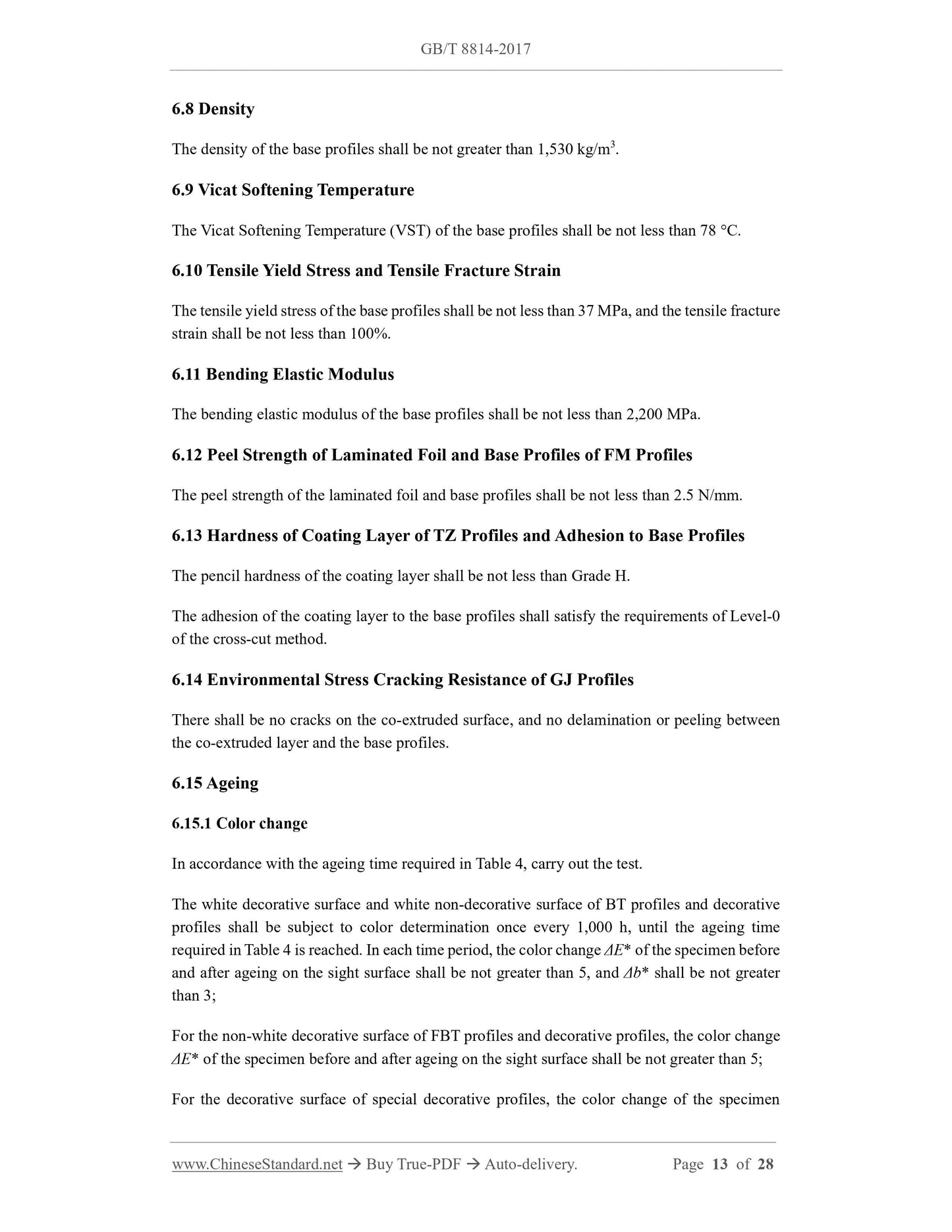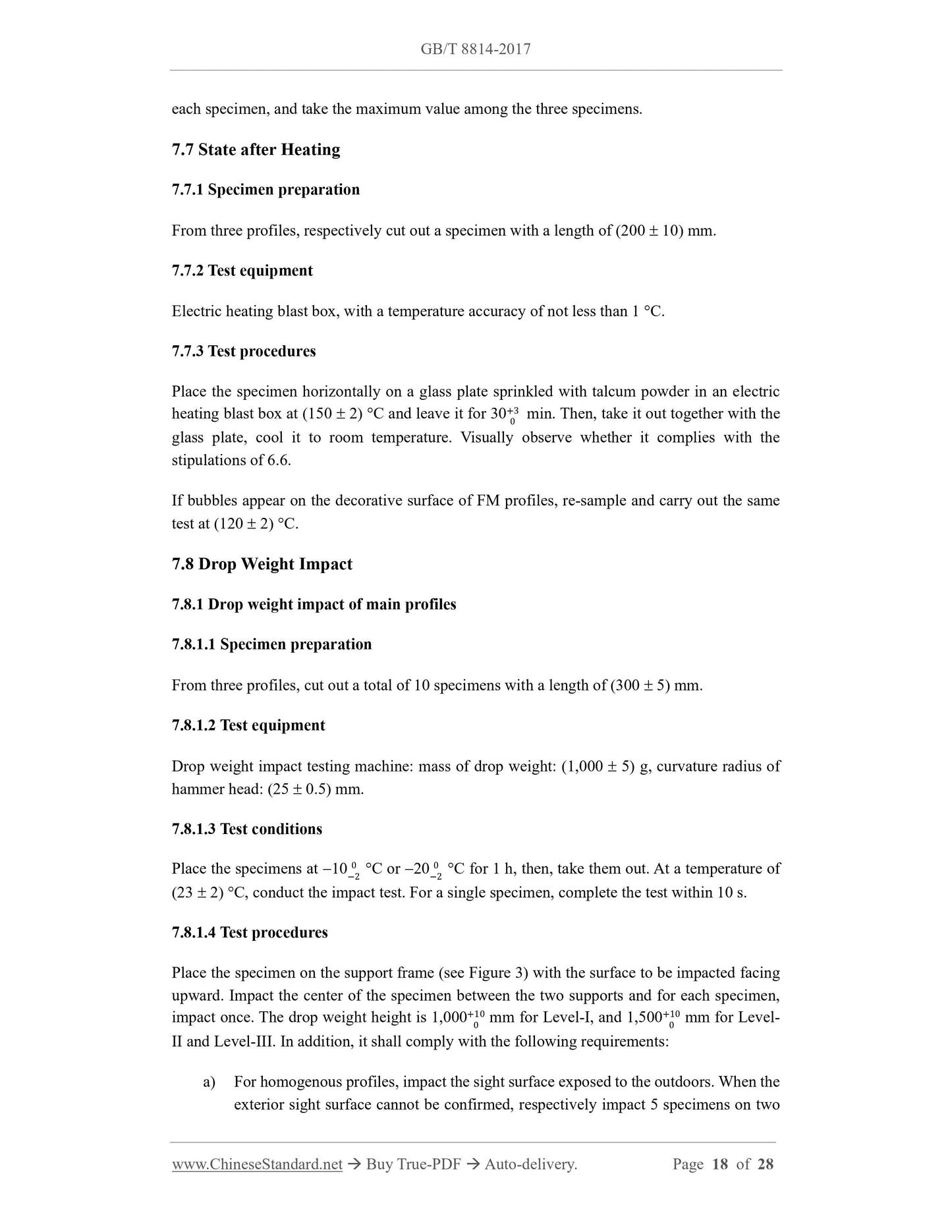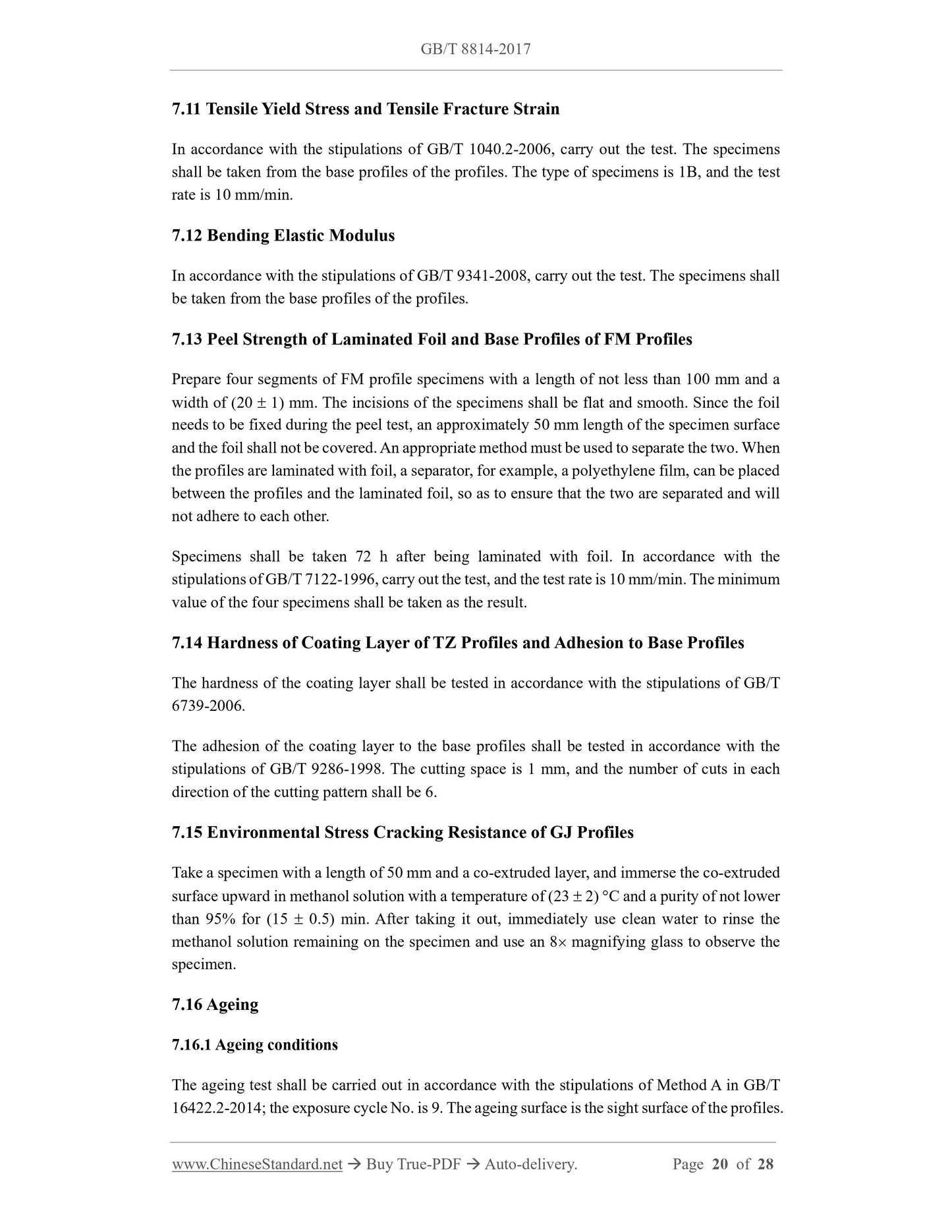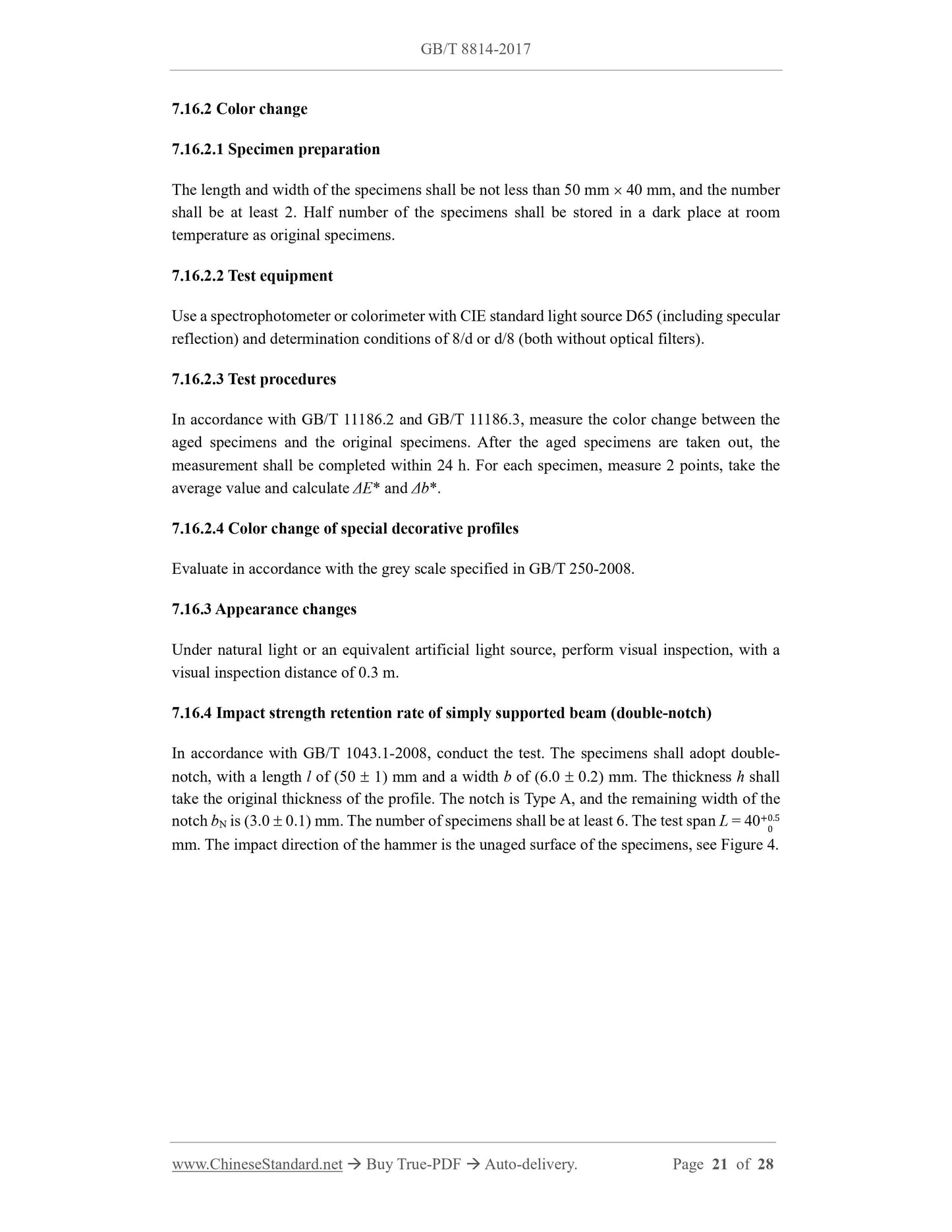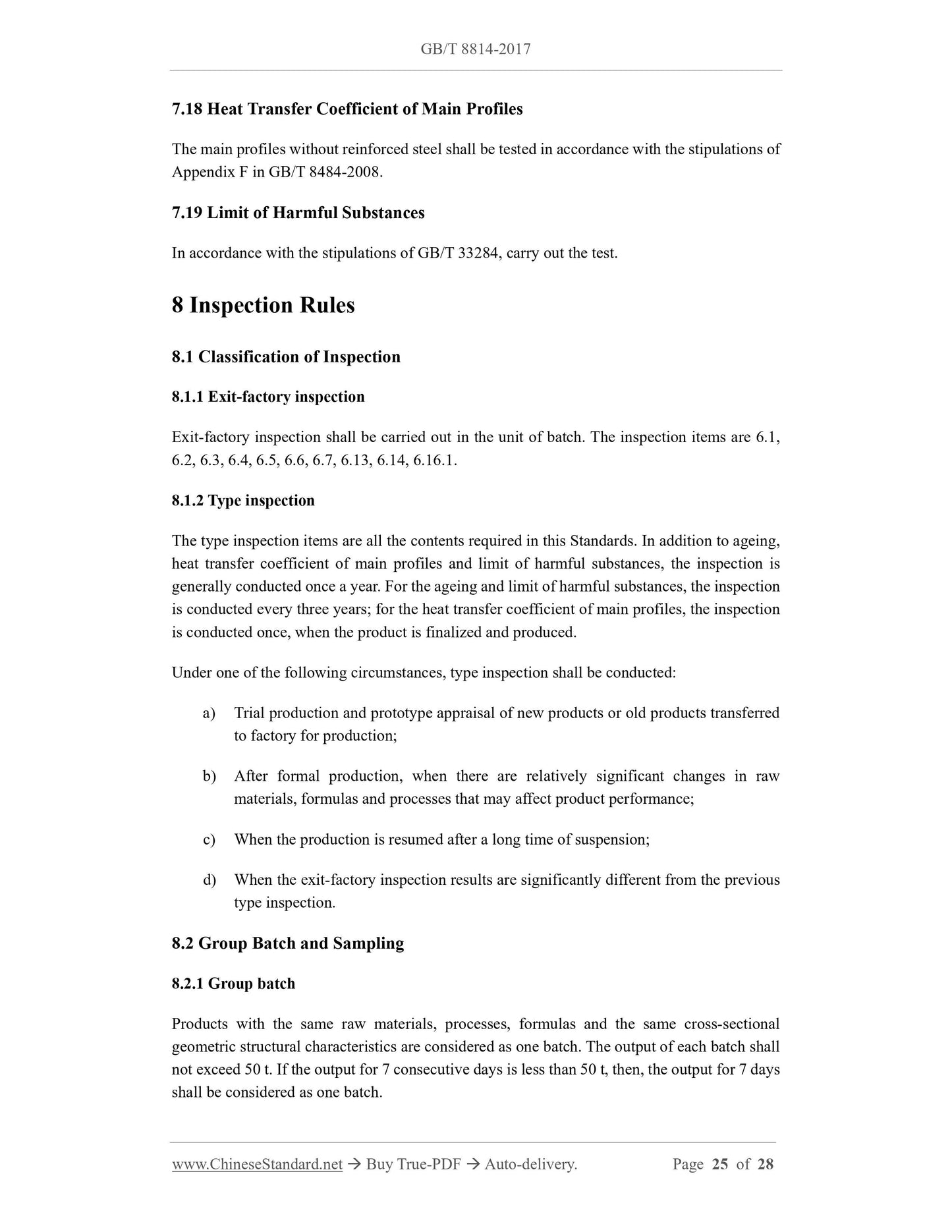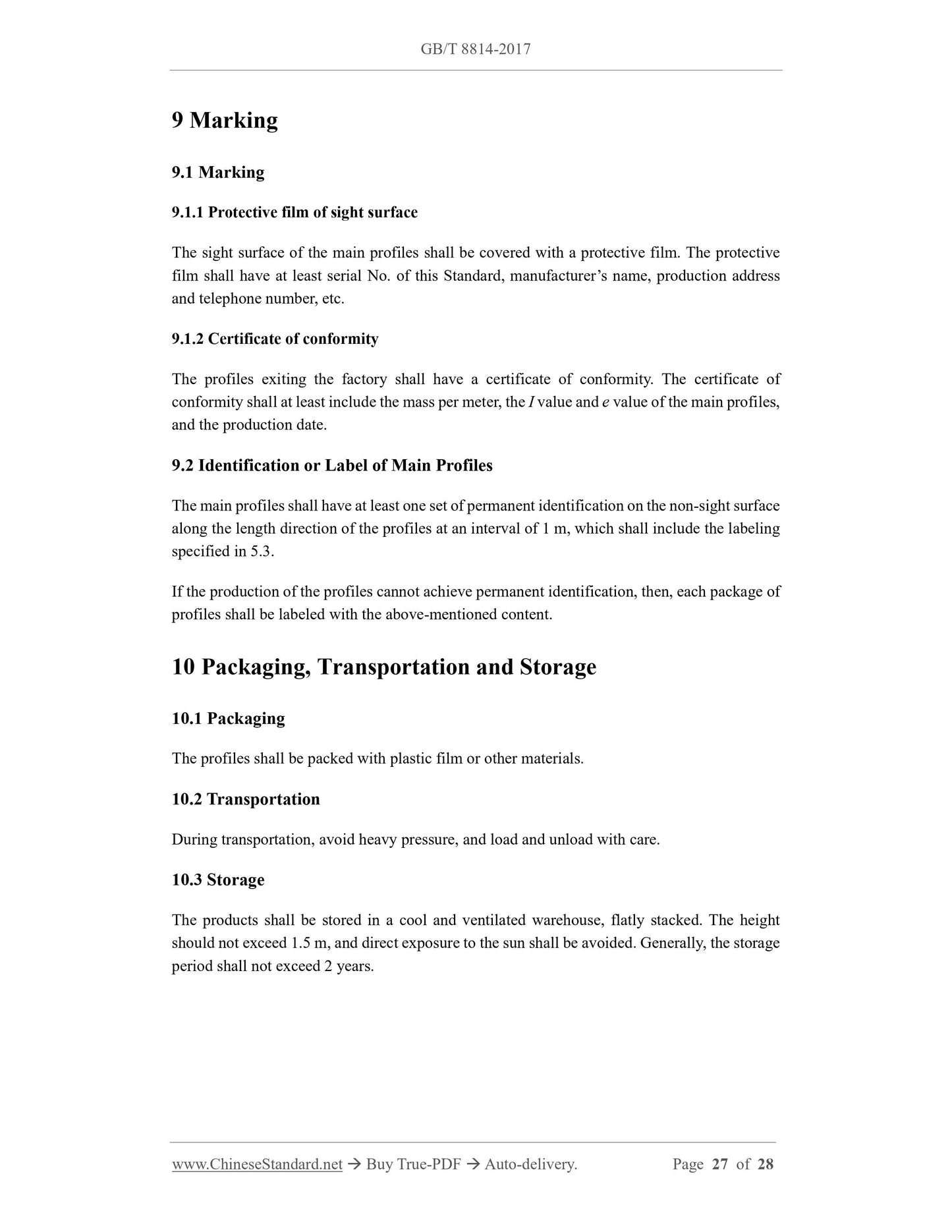1
/
of
12
www.ChineseStandard.us -- Field Test Asia Pte. Ltd.
GB/T 8814-2017 English PDF (GB/T8814-2017)
GB/T 8814-2017 English PDF (GB/T8814-2017)
Regular price
$255.00
Regular price
Sale price
$255.00
Unit price
/
per
Shipping calculated at checkout.
Couldn't load pickup availability
GB/T 8814-2017: Unplasticized polyvinyl chloride (PVC-U) profiles for the doors and windows
Delivery: 9 seconds. Download (and Email) true-PDF + Invoice.Get Quotation: Click GB/T 8814-2017 (Self-service in 1-minute)
Newer / historical versions: GB/T 8814-2017
Preview True-PDF
Scope
This Standard specifies the base profile materials, classification, rating and labeling,requirements, test methods, inspection rules, marking, packaging, transportation and storage of
unplasticized polyvinyl chloride (PVC-U) profiles for the doors and windows.
This Standard is applicable to the profiles for doors and windows using unplasticized polyvinyl
chloride as the main material.
Basic Data
| Standard ID | GB/T 8814-2017 (GB/T8814-2017) |
| Description (Translated English) | Unplasticized polyvinyl chloride (PVC-U) profiles for the doors and windows |
| Sector / Industry | National Standard (Recommended) |
| Classification of Chinese Standard | Y28 |
| Classification of International Standard | 83.140.01 |
| Word Count Estimation | 20,233 |
| Date of Issue | 2017-11-01 |
| Date of Implementation | 2018-05-01 |
| Older Standard (superseded by this standard) | GB/T 8814-2004 |
| Regulation (derived from) | National Standard Announcement 2017 No. 29 |
| Issuing agency(ies) | General Administration of Quality Supervision, Inspection and Quarantine of the People's Republic of China, Standardization Administration of the People's Republic of China |
Share
